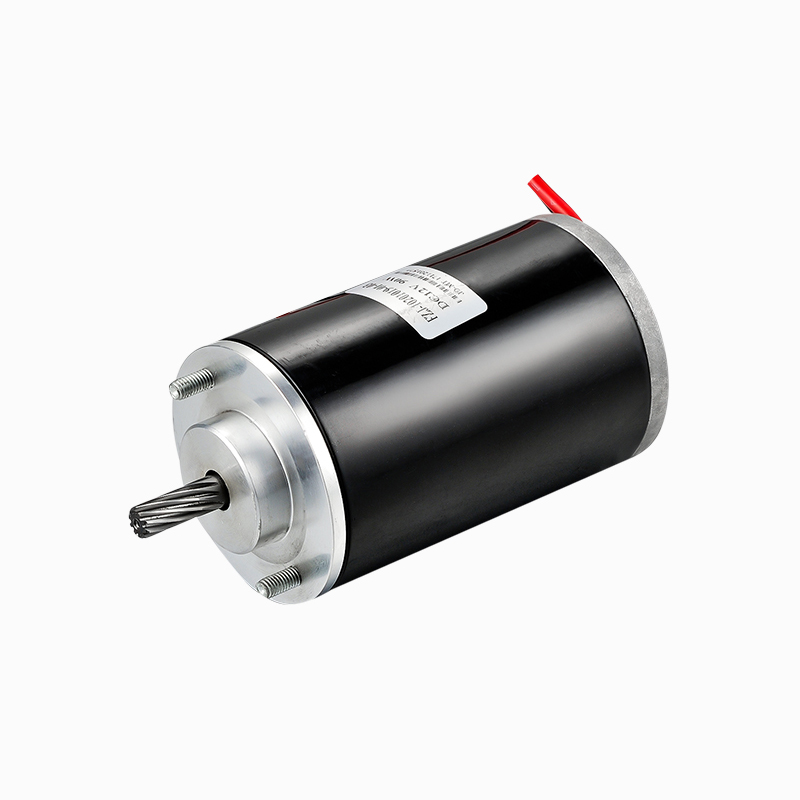Call us
+86-18023576732
+86-0579-89008006
Fax: +86-0579-82206899
Thermal Sensitivity of Permanent Magnets
The performance of a Permanent Magnet DC Motor in high-temperature conditions largely depends on the thermal characteristics of its magnets. Permanent magnets, especially those made from rare-earth materials like neodymium, have specific operating temperatures beyond which their magnetic properties begin to degrade. When exposed to excessive heat, magnets can lose part of their magnetization, which directly impacts the motor’s torque output and efficiency. This irreversible demagnetization reduces overall motor performance and lifespan if the temperature exceeds the design limits.

Impact on Motor Efficiency and Torque
As the temperature rises, the magnetic flux density inside the motor decreases due to thermal demagnetization. This causes a drop in the generated electromagnetic force, causing lower torque and diminished efficiency. In a high-temperature environment, the Permanent Magnet DC Motor might require more electrical input to maintain the same mechanical output, resulting in increased power consumption and heat generation. Over time, this can cause a vicious cycle where heat further degrades magnetic strength and efficiency.
Materials and Design Considerations for Heat Resistance
Manufacturers often address high-temperature challenges by selecting magnets with higher Curie temperatures and improved thermal stability, such as samarium-cobalt instead of neodymium magnets, although the latter is more common due to cost-effectiveness. Additionally, enhanced insulation materials for windings, improved cooling mechanisms, and optimized motor designs help manage heat dissipation. Proper thermal management is critical, including the use of heat sinks, forced air or liquid cooling, and temperature monitoring to prevent overheating and maintain motor reliability.
Effects on Other Motor Components
Beyond magnets, elevated temperatures also affect the insulation of the windings, bearings, and other structural parts of the motor. Insulation materials degrade faster under thermal stress, increasing the risk of electrical shorts or failures. Bearings may experience reduced lubrication efficiency, causing increased friction and wear. These factors collectively impact the motor’s durability and maintenance requirements, making it important to consider the full system design when deploying Permanent Magnet DC Motors in hot environments.
Operational Strategies to Mitigate High-Temperature Risks
To ensure reliable performance, operators may employ various strategies such as derating the motor, running it below its rated power to reduce heat generation. Periodic rest cycles allow cooling and prevent continuous thermal stress. Using temperature sensors integrated into the motor housing enables real-time monitoring and triggers protective shutdowns before critical temperature thresholds are reached. Such proactive management helps extend the motor’s operational life in challenging conditions.
Applications and Environmental Challenges
Permanent Magnet DC Motors are used in industries where high temperatures are common, such as automotive, aerospace, and heavy machinery. In these applications, motors must be engineered specifically to withstand elevated temperatures while maintaining efficiency and performance. For instance, in electric vehicles operating in hot climates or under heavy loads, temperature-resistant motor designs are essential to prevent premature failure. Similarly, industrial motors in furnaces or outdoor equipment require robust thermal tolerance.
Conclusion: Balancing Performance with Thermal Durability
In conclusion, while Permanent Magnet DC Motors offer many advantages, their performance can be significantly affected by high-temperature environments due to the sensitivity of their magnetic materials and other components. Selecting appropriate magnet types, employing advanced thermal management, and adopting operational safeguards are essential to maintain efficiency and prolong service life. Understanding these factors allows engineers and users to effectively deploy these motors in heat-intensive applications without compromising reliability or performance.
Contact Us